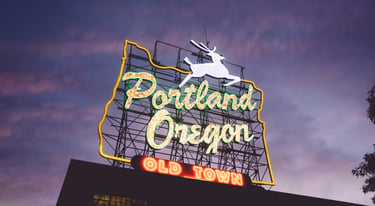Exploring Cusco: Gateway to Machu Picchu and Beyond
Dive into the heart of Peru with our comprehensive guide to Cusco, the historic capital of the Inca Empire. Whether you’re a budget traveler or an adventurer at heart, Cusco offers a rich cultural tapestry, ancient Inca ruins, and breathtaking landscapes that won't break the bank. From exploring vibrant markets and savoring traditional Peruvian cuisine to hiking the Sacred Valley and uncovering the mysteries of Machu Picchu, we'll show you how to experience it all while staying within your budget. Join us as we uncover Cusco's treasures and help you make the most of your journey.
Peter Komfolio
10/17/202410 min read

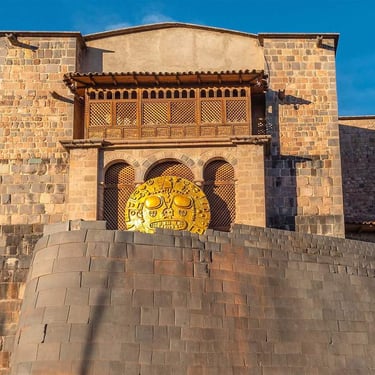


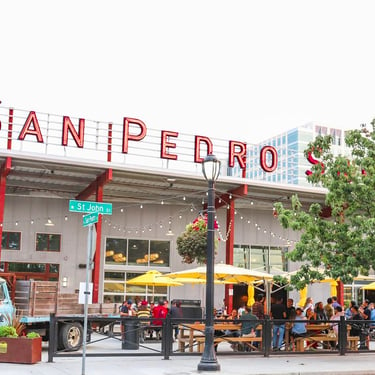
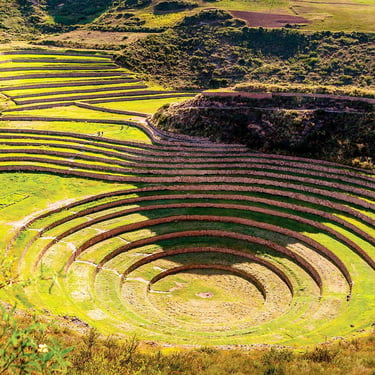

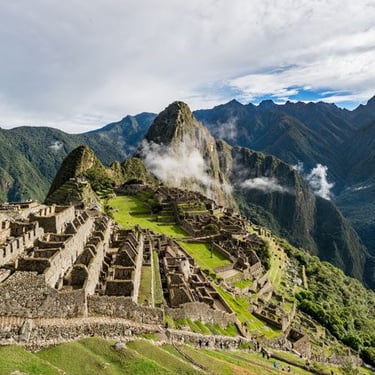
Machu Picchu, Cusco, Peru
Qorikancha ( Temple of Sun), Cusco, Peru
Sacsayhuamán, Cusco, Peru
Plaza de Armas, Cusco, Peru
San Pedro Market, Cusco, Peru
The Sacred Valley, Cusco, Peru
The Inca Trail, Cusco, Peru
Ollantaytambo, Cusco, Peru
Click below to explore everything this stunning destination has to offer
Discover More About Cusco!


Introduction to Cusco
Cusco, located in the Andes of southern Peru, is often regarded as the historic capital of the Inca Empire. This city, rich in history and culture, serves as a vital gateway to the renowned archaeological site of Machu Picchu, attracting millions of tourists each year. As visitors arrive, they encounter a unique blend of Inca heritage and Spanish colonial influence that has shaped the city over centuries. The importance of Cusco lies not only in its role as a jumping-off point to Machu Picchu but also in its status as a cultural epicenter that embodies the legacy of the Incas.
The city is a UNESCO World Heritage Site, recognized for its well-preserved historical architecture and vibrant traditions. Walking through the cobblestone streets of Cusco, one can observe the stunning remains of Inca walls intermingled with colonial buildings, such as the majestic Cathedral of Santo Domingo, which stands atop the ancient Korikancha Temple dedicated to the Sun God. These architectural marvels exemplify the rich tapestry of Cusco's past and present, illustrating how the Inca and Spanish influences coexist harmoniously.
As the primary gateway to Machu Picchu, Cusco serves as more than just a transition point for travelers heading to the iconic site. The city itself offers a wealth of experiences, including local markets, traditional Peruvian cuisine, and festivals that celebrate the ancient customs of the region. Visitors can immerse themselves in the vibrant culture, learning about local crafts and history while enjoying the breathtaking backdrop of the Andes Mountains. Thus, Cusco stands as a testament to Peru's historical significance and a doorway to countless adventures beyond Machu Picchu.
Machu Picchu: The Jewel of the Inca
Machu Picchu, often referred to as the "Lost City of the Incas," remains one of the most iconic and breathtaking historical sites in the world. Situated at an elevation of 2,430 meters in the Andes Mountains of Peru, this ancient citadel is not only a testament to Inca architectural ingenuity but also serves as a significant cultural symbol. Designated as a UNESCO World Heritage site in 1983, Machu Picchu attracts over a million visitors each year, drawn by its mysterious history and stunning landscape.
Constructed in the 15th century under the reign of Inca Emperor Pachacuti, Machu Picchu was believed to be a royal estate or a sacred religious site. The precise purpose of this remarkable site still eludes archaeologists and historians, adding to its allure. Visitors are often fascinated by the intricate dry-stone construction, the agricultural terraces, and the breathtaking panoramic views that stretch across the lush valleys and towering peaks of the surrounding Andes.
Reaching Machu Picchu can be as adventurous as the destination itself. The most popular way to arrive is by hiking the Inca Trail, a multi-day trek that offers a unique glimpse into the Inca Empire's rich history and the stunning natural environment of the Andes. The Inca Trail winds through varied terrains, encompassing lush rainforests, rugged mountains, and ancient Incan sites. For those who prefer a more leisurely route, several train options provide comfort and scenic views, departing from the vibrant city of Cusco to the nearby town of Aguas Calientes. From there, a short bus ride takes travelers up to the entrance of Machu Picchu.
Regardless of the chosen mode of transportation, experiencing Machu Picchu is an adventure that leaves an indelible mark on its visitors, encapsulating the spirit of exploration and the enduring mystery of the Incan civilization.
A Stroll Through Cusco's Unique Architecture
Cusco, the historic capital of the Inca Empire, boasts a unique architectural landscape that harmoniously blends its rich indigenous heritage with the colonial influence brought by the Spanish conquistadors. This captivating city is adorned with charming stone buildings, intricate facades, and numerous landmarks that reflect the cultural narrative of Peru’s history. Among the standout structures is the Qorikancha Temple, originally dedicated to the sun god Inti, which epitomizes the brilliance of Inca construction techniques. The temple's walls were once covered in gold, but following the Spanish conquest, it became the foundation for the Santo Domingo Church. Visitors can witness the impressive fusion of seamlessly fitting stones characteristic of Inca architecture alongside the baroque embellishments of colonial design.
Another prominent site is the Plaza de Armas, the heart of Cusco, which remains a significant social and cultural hub. The square is surrounded by majestic colonial buildings, such as the Cathedral of Cusco, which was built upon the ruins of the Inca palace of Hanan Qosqo. The Plaza de Armas serves as a poignant reminder of the city’s complex history, where pre-Columbian and colonial legacies are interwoven. Its vast space is often filled with locals and tourists alike, engaging in social activities and celebrating various cultural festivals.
As one strolls through Cusco, it becomes evident that each alley and square tells a story of resilience and transformation, where the remnants of Inca prowess coexist with Spanish colonial artistry. The aesthetic appeal of the various architectural styles showcases the city’s historical depth and diversity. Appreciating this unique architectural tapestry offers insight into the influences that shape Cusco's identity, making it an essential part of the experience for any visitor exploring this vibrant region.
Vibrant Markets: A Feast for the Senses
Cusco, a city steeped in history and culture, is home to a plethora of vibrant markets where locals and visitors alike come together to experience the richness of Peruvian life. Among these, the San Pedro Market stands out as a bustling hub of activity. Located just a short walk from the main square, this market offers a sensory overload of sights, sounds, and aromas, making it an essential stop for anyone exploring Cusco. Here, you can immerse yourself in the daily life of the residents while discovering an extensive range of local produce, handicrafts, and traditional foods.
When visiting San Pedro Market, it is recommended to accept the warm invitations of vendors selling colorful textiles, handmade jewelry, and indigenous crafts. These creations not only serve as unique souvenirs but also reflect the rich cultural heritage of the region. Do not hesitate to bargain; it's common practice and an integral part of the shopping experience in Peru. Additionally, understanding some basic Spanish phrases can enhance interactions with the merchants and enrich the overall experience.
Food is a significant aspect of the market experience, and there are several must-try dishes. Sampling traditional Peruvian ceviche, composed of fresh fish marinated in lime juice, or enjoying hearty tamales are essential activities. For those looking for a unique treat, try the local delicacy, cuy, or guinea pig, prepared in various ways. The market also offers a range of exotic fruits, such as lucuma and chirimoya, which provide a refreshing taste of Peru's diverse agriculture.
In addition to shopping and dining, the market serves as a cultural centerpiece, reflecting the daily interactions and vibrant spirit of the Cusco community. Engaging with locals through the shared experience of these markets provides a deeper understanding of Cusco's traditions and way of life, making it an unforgettable experience on your journey to Machu Picchu and beyond.
The Sacred Valley: Nature and Adventure
The Sacred Valley, nestled between the majestic Andean mountains, is a captivating region that offers a remarkable blend of stunning natural landscapes and rich Inca heritage. Renowned for its breathtaking views, the valley is a haven for outdoor enthusiasts and adventure seekers alike. The diverse terrain presents numerous hiking opportunities, connecting explorers with both nature and the remnants of an ancient civilization.
One of the most popular trekking routes in the Sacred Valley is the Inca Trail, a historic pathway that leads to the iconic Machu Picchu. This trek typically spans four days, taking adventurers through beautiful landscapes, ancient ruins, and an array of ecosystems. Along the way, hikers are treated to panoramic vistas that showcase the valley’s lush green fields, terraced agricultural land, and the river winding through the breathtaking hills. Such natural beauty not only makes for a rewarding journey but also serves as an immersive experience in the history of the Inca civilization.
For those seeking less strenuous options, the Sacred Valley boasts various trails suited for all experience levels. The Ollantaytambo to Patacancha hike, for instance, offers scenic views while allowing trekkers to explore traditional Andean villages reflecting the rich cultural identity of the region. Additionally, the region is dotted with opportunities for engaging in adventure sports, such as mountain biking, horseback riding, and even paragliding, each presenting unique ways to appreciate the valley from different perspectives.
Exploring the Sacred Valley allows one to witness the impressive interplay between nature and Inca history. As visitors traverse this extraordinary landscape, they gain insights into the agricultural practices of the ancient civilization and develop a deeper appreciation for the vibrant ecological systems that continue to sustain the local communities. From stunning vistas to invigorating adventures, the Sacred Valley stands as a breathtaking gateway to the wonders of both nature and history in Peru.
Budget Travel Tips in Cusco
Cusco, known as the gateway to Machu Picchu, offers various opportunities for budget travelers to explore its rich history and vibrant culture without incurring significant expenses. One of the most recommended ways to discover the city is by participating in free walking tours. These tours not only provide a money-saving option but also allow travelers to gain valuable insights into the historical significance and modern-day life of Cusco. Various companies operate these tours; however, visitors are encouraged to tip the guides based on their satisfaction.
When it comes to dining, Cusco is home to many low-cost eateries that serve authentic Peruvian cuisine. Local markets, such as San Pedro Market, provide an array of tasty, budget-friendly options for breakfast and lunch. Visitors can enjoy traditional dishes like tamales, empanadas, or ceviche without overspending. Numerous small restaurants offer 'menu del dia,' a set meal that typically includes a soup, main dish, and drink at an affordable price, usually ranging from 10 to 20 soles.
Accommodations in Cusco cater to all budgets, and finding a suitable place to stay is feasible, even for those on a tight budget. Hostels provide an ideal option for solo travelers or groups looking to save money. Additionally, several guesthouses and budget hotels offer comfortable stays at competitive rates. Many of these establishments are conveniently located near historical sites, allowing easy access to explore the city and its surroundings without the need for transportation costs.
Overall, with careful planning and a willingness to embrace local experiences, travelers can enjoy all that Cusco has to offer while staying within their budget. By taking advantage of free walking tours, low-cost dining, and budget accommodations, visitors can create lasting memories in this enchanting city without straining their finances.
Cultural Experiences: Engaging with Local Traditions
Cusco, often revered as the historic capital of the Incan Empire, offers a rich tapestry of cultural experiences that captivate numerous visitors. From vibrant festivals to traditional music and dance, the city serves as a living museum, inviting guests to immerse themselves in local traditions. Each year, Cusco hosts a plethora of festivals that showcase its unique cultural heritage. Events such as Inti Raymi, the Festival of the Sun, and Qoyllur Rit'i, the Star Snow Festival, are spectacular displays that not only commemorate ancestral practices but also attract global audiences eager to witness authentic Andean rituals.
Travelers looking to engage with the local community can participate actively in these festive occasions. Attending a traditional ceremony or a colorful parade can provide a profound understanding of the customs and values held by the residents of Cusco. Moreover, joining in local dance performances, such as the lively Marinera or the spirited Huaylas, allows visitors to connect at a deeper level with the cultural expressions of the region. It is through these interactions that a traveler truly appreciates the significance of these age-old traditions.
Volunteering is another meaningful way to engage with the local traditions of Cusco. Opportunities abound in various community projects focused on preserving indigenous customs, promoting sustainable tourism, or teaching English to local children. Such initiatives not only enhance the traveler’s experience but also contribute positively to the communities they visit. By volunteering, tourists become part of the ongoing narrative of the region, fostering mutual respect and understanding.
Overall, engaging with the local traditions of Cusco offers a unique perspective on its rich cultural heritage. Visitors leave not only with memories of breathtaking landscapes but with a deeper appreciation for the vibrant tapestry of life that defines this remarkable destination.
What is the Alaska Airlines Mileage Plan?
If you love to travel, you’ll want to know all about the Alaska Airlines Mileage Plan. This frequent flyer program is designed for those who frequently fly with Alaska Airlines or its partner airlines. But what makes it special? Unlike most programs, the Mileage Plan rewards members based on the distance flown, rather than the amount of money spent on tickets. This unique approach benefits long-haul travelers, allowing them to rack up miles faster and experience more rewards.
How Do You Earn Miles?
Earning miles with the Alaska Airlines Mileage Plan is all about the journey. For every mile you fly, you can earn miles in your account. This means that if you’re jet-setting across the globe, you’re not just earning a seat on your flight; you’re also collecting valuable miles that can lead to free flights or upgrades. Whether you’re flying with Alaska or a partner airline, each flight can build up your mileage balance significantly. Also, consider that some partners might offer bonus miles, so always check before booking your tickets.
Redeeming Your Miles: More Than Just Flights
One of the greatest advantages of the Alaska Airlines Mileage Plan is its flexibility when it comes to redeeming miles. While most people think of using miles for flights, this program allows for much more. You can redeem your hard-earned miles for seat upgrades that can make your flying experience much more comfortable. Beyond the skies, these miles can also be exchanged for hotel stays, car rentals, and even exclusive experiences, making your travels much more enjoyable.
If you’re considering enrolling in the Alaska Airlines Mileage Plan, it’s definitely a good move if you fly often. With its member-friendly features, this mileage plan offers a unique structure that not only rewards you for the number of miles flown but also allows for diversified redemption options, making it a versatile program for any traveler. So, pack your bags, and get ready to start earning miles with Alaska Airlines.



